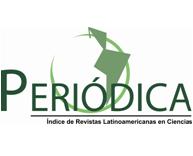ULTRASONIC-ASSISTED EXTRACTION (UAE) AND ITS APPLICATION IN OBTAINING VEGETABLE OILS
Keywords:
vegetable oil, ultrasound-assisted extraction, bioactivity, solvents, performanceAbstract
Introduction:
The extraction of vegetable oils with organic solvents pollutes the environment and is expensive. Ultrasound-assisted extraction (UAE) has provided important benefits in the production of oils, such as: higher revenues, decreased operation time and solvent consumption, which makes it friendly to the planet.
Objective:
Provide the conceptual foundations, applications and potentialities of ultrasoundassisted extraction in the performance, physical-chemical characteristics and bioactivity of oils obtained from plant sources.
Materials and Methods:
71 original and review publications were studied, using techniques and methodologies related to the extraction and characterization of vegetable oils using EAU, solvents and pressing in different types of seeds corresponding to the period 2013-2022, considering the quality and nature of the publications.
Results and Discussion:
The reviewed articles showed that, with the UAE in vegetables, vegetable and essential oils, and phenolic compounds were obtained; from both the seeds (chia), the leaves (soursop) and the mesocarp (avocado pulp). The new contributions and methods optimized the extraction of the required compounds, with the need to apply them in the food, cosmetic and pharmaceutical process industry.
Conclusions:
The review of the articles dealing with the production of vegetable oils using the EAU, established that this technique used organic solvents such as hexane, but its consumption is lower than traditional methods; decreased work times; the yields of theextracts were more efficient and the bioactive properties benefit the organism as antioxidants (canola) or anticarcinogenic (olive).
Downloads
Downloads
Published
How to Cite
Issue
Section
License

This work is licensed under a Creative Commons Attribution-NonCommercial 4.0 International License.




















